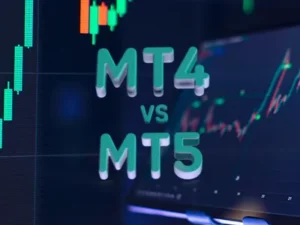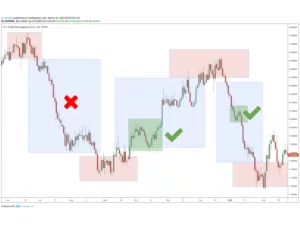Forex trading in India follows strict rules set by the Reserve Bank of India (RBI) and the Securities and Exchange Board of India (SEBI). These bodies ensure that trades happen only on approved exchanges like the National Stock Exchange (NSE), Bombay Stock Exchange (BSE), and Metropolitan Stock Exchange (MSE). You can trade currency derivatives—futures and options—in pairs involving the Indian Rupee (INR), such as USD/INR, EUR/INR, GBP/INR, and JPY/INR. Spot trading or non-INR pairs are not allowed for retail traders to prevent capital flight and maintain economic stability.
Using RBI-approved apps keeps your funds safe and your trades legal under the Foreign Exchange Management Act (FEMA). These platforms connect you to recognized exchanges, offer real-time data, and support quick order placement. As of 2025, popular options include apps from SEBI-registered brokers like Zerodha, Upstox, and Angel One. Always check the broker’s SEBI registration and RBI compliance before starting. This setup lets you focus on market moves without legal worries.
To get hands-on, open a demo account on Zerodha’s Kite app. Download it from the Play Store or App Store, sign up with your PAN and bank details, and switch to paper trading mode. Pick USD/INR futures, set a small virtual position—say, buy one lot at current rates—and track how expiry dates affect value over a day. Review the profit/loss in the app’s reports section. Repeat with a stop-loss order at 0.5% below entry to practice risk control. Spend 30 minutes daily for a week to build confidence before live trades.
What Is Forex Trading in India?
Forex trading means buying and selling currencies to profit from rate changes. In India, it limits to INR-based pairs on stock exchanges, unlike global spot markets.
You can do futures contracts, which lock in rates for future delivery, or options that give the right but not obligation to buy/sell. These run on NSE and BSE with daily settlements.
RBI controls forex to protect the rupee’s value and limit outbound funds. Breaking rules can lead to fines or account freezes, so stick to approved channels.
Apps make this simple by linking your demat account to live feeds. Start with small lots to learn without big losses.
RBI Rules for Currency Trading
RBI allows trading only in six INR pairs: USD/INR, EUR/INR, GBP/INR, JPY/INR, plus cross pairs like EUR/USD/INR. No leverage beyond exchange limits, and positions must close by expiry.

Traders remit up to $250,000 yearly under Liberalised Remittance Scheme (LRS), but not for margin trading abroad. Use Indian brokers to avoid violations.
- Daily trading hours: 9 AM to 5 PM IST.
- Minimum lot sizes: Vary by pair, e.g., 1,000 units for USD/INR.
- No overnight holds for some contracts.
Check RBI’s website for updates. Practice by simulating a full trading day on Upstox Pro’s demo—enter three trades across pairs and note how news like US Fed announcements shifts prices.
Top RBI Approved Forex Apps in 2025
These apps stand out for ease and features. All are SEBI-registered and RBI-compliant.
| App Name | Broker | Key Features | Brokerage Fee | Best For |
|---|---|---|---|---|
| Kite | Zerodha | Charts, alerts, API access | ₹20/order | Beginners |
| Upstox Pro | Upstox | Hindi support, fast execution | ₹20/order | Mobile users |
| Angel One | Angel Broking | Research tools, zero delivery | ₹20/order | Research-focused |
| Groww | Groww | Simple UI, mutual funds link | ₹20/order | New investors |
| 5Paisa | 5Paisa | Low margins, robo-advisory | ₹20/order | Active traders |
Zerodha’s Kite leads with its clean interface and low costs. Upstox Pro suits quick trades with voice commands. Fund a virtual account with ₹10,000 imaginary rupees. Trade EUR/INR options—buy a call if rates rise on Eurozone data. Set alerts for 0.2% moves and exit half position at profit target. Log outcomes in a notebook to spot patterns over 10 sessions.
How to Select the Right App
Look at user reviews on Play Store, check SEBI license on their site, and test demo versions. Prioritize apps with strong encryption and quick customer support.
Fees matter—aim for flat ₹20 per order over percentage-based. Also, ensure offline order placement for spotty internet.
Must-Have App Features
- Real-time INR pair quotes.
- Customizable charts with indicators like RSI.
- One-tap P&L tracking.
Download two apps, compare load times, and run mock trades. This hands-on test reveals which fits your phone and style best.
Setting Up Your Trading Account
Open a trading and demat account online in 10 minutes. Submit PAN, Aadhaar, bank proof, and income details. E-sign via net banking. Link your bank for instant funds transfer. Most apps verify in 24 hours.
Once active, deposit ₹5,000 minimum. Practice setup by funding Zerodha with virtual cash—add watchlists for all six pairs, set price notifications, and place a limit order on GBP/INR. Monitor for two days to see fill rates.
Basic Forex Trading Strategies for Indians
Buy when prices rise above 20-day moving average on USD/INR charts. Use news trading around RBI policy announcements—short JPY/INR if yen weakens on Bank of Japan signals.
- Risk 1% of capital per trade.
- Use stop-losses always.
- Diversify across two pairs max.
Chart past data, apply a moving average crossover strategy on five historical days. Calculate win rate and adjust stops to cap losses at 0.5%. Do 20 runs to refine.
Managing Risks in Forex Trades
Markets swing on global events, so set stops and avoid overtrading. Keep a journal of every trade’s reason and result. Diversify with options to limit downside—pay premium for protection.
- Chasing losses with bigger bets.
- Ignoring expiry deadlines.
- Trading without economic calendars.
Allocate ₹20,000 virtual funds. Enter four trades with 1% risk each, using trailing stops. Review after a week—if drawdown exceeds 5%, tweak position sizes. This builds discipline for real money.
Tools and Resources for Forex Learners
Learning forex effectively requires using reliable educational tools and practicing with real data. Today, both brokers and financial institutions in India offer a variety of free and paid resources that help new traders understand currency markets, regulations, and trading strategies.
Free tools like the NSE’s learning portal provide structured lessons on derivatives, forex contracts, and money management. Many brokers also host live webinars and tutorials on chart analysis, trading psychology, and technical indicators. In addition, most trading apps now include built-in calculators for margin, pip value, and options Greeks — allowing traders to calculate position sizes and risk directly within the app before placing trades.
To stay compliant and informed, every trader should read RBI circulars monthly, especially those related to foreign exchange rules, margin limits, and cross-border payment restrictions. This ensures you understand what’s legal when trading forex in India.
For hands-on practice, tools like Upstox’s strategy backtester are highly valuable. You can input a breakout strategy using EUR/GBP/INR data from the last quarter, then run simulations to test performance. Adjust entry and exit rules, compare results with a buy-and-hold approach, and note which setup yields better consistency.
FAQ
Is forex trading fully legal in India?
Yes, but only INR pairs on NSE, BSE, or MSE through SEBI brokers. Offshore spot trading violates FEMA.



